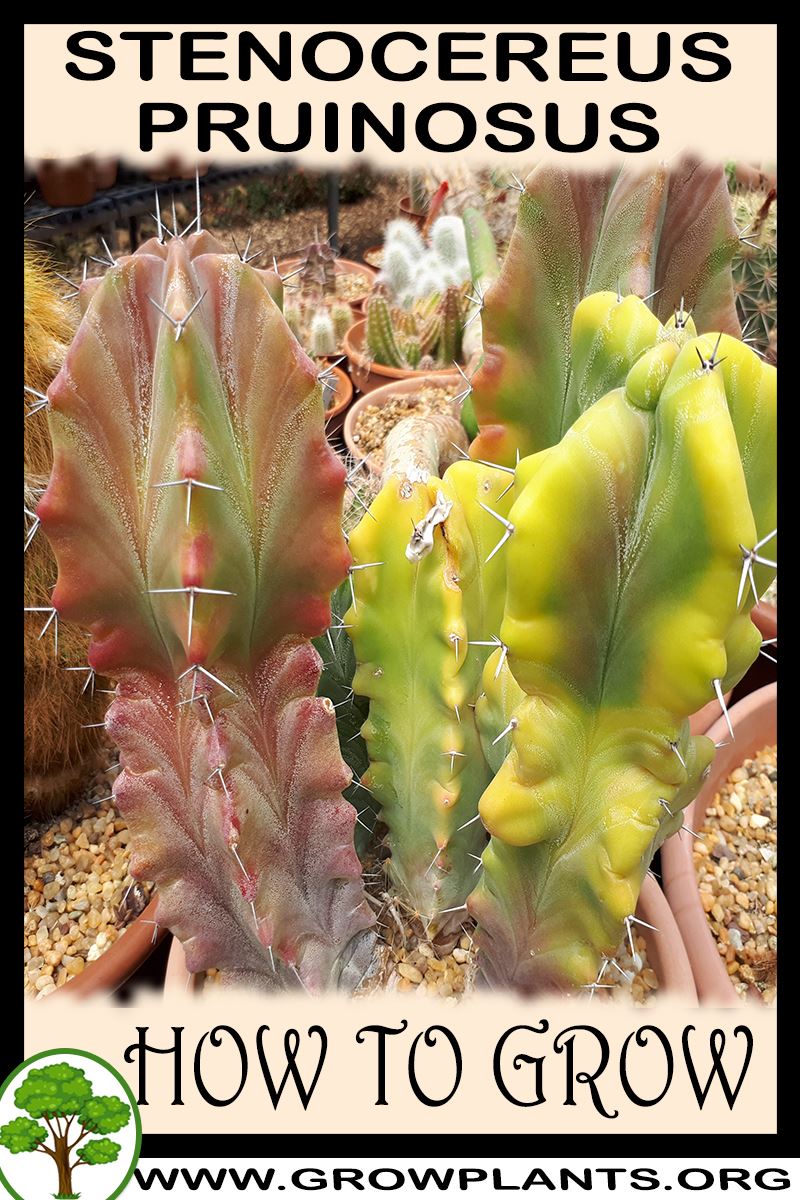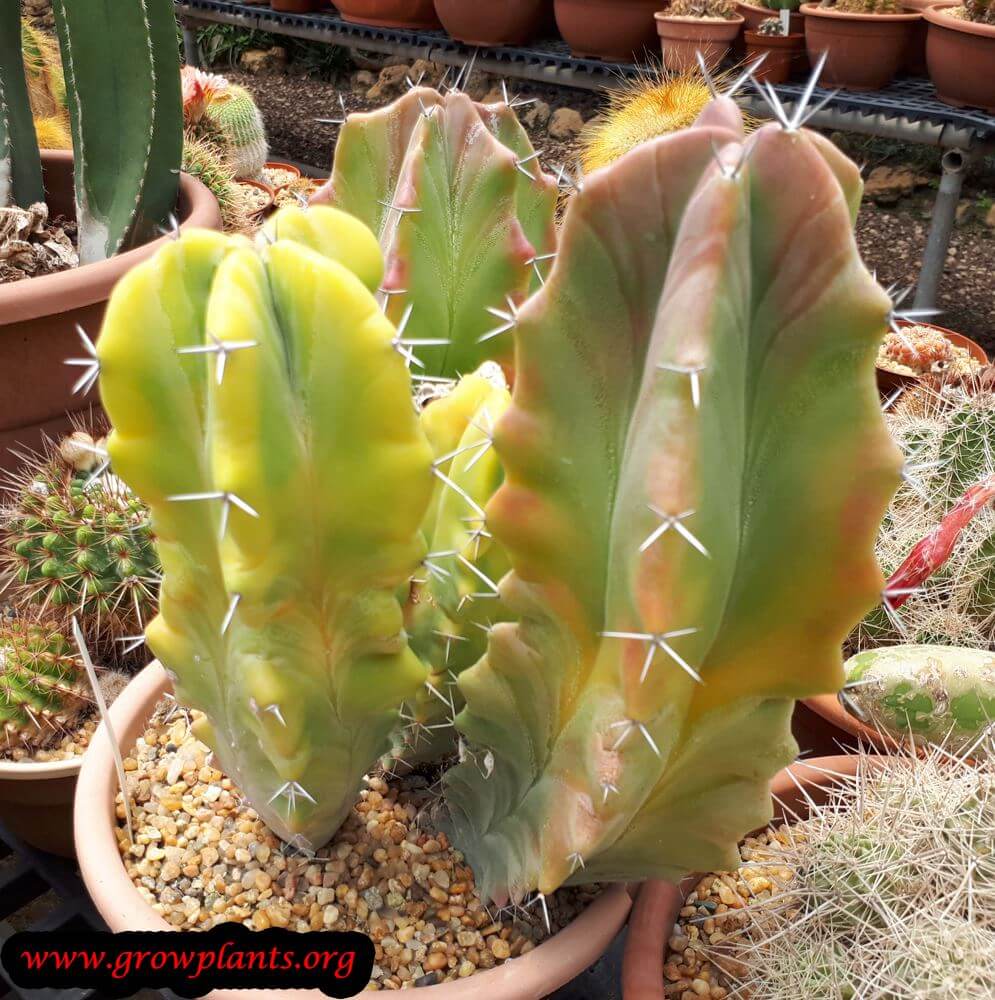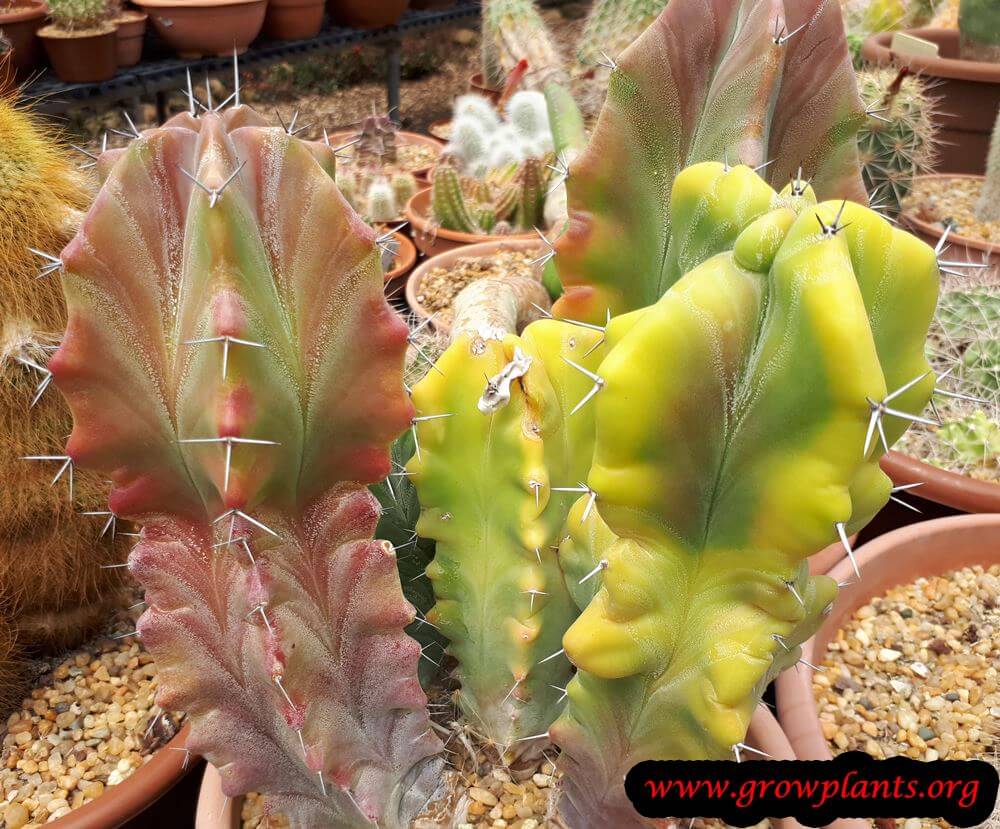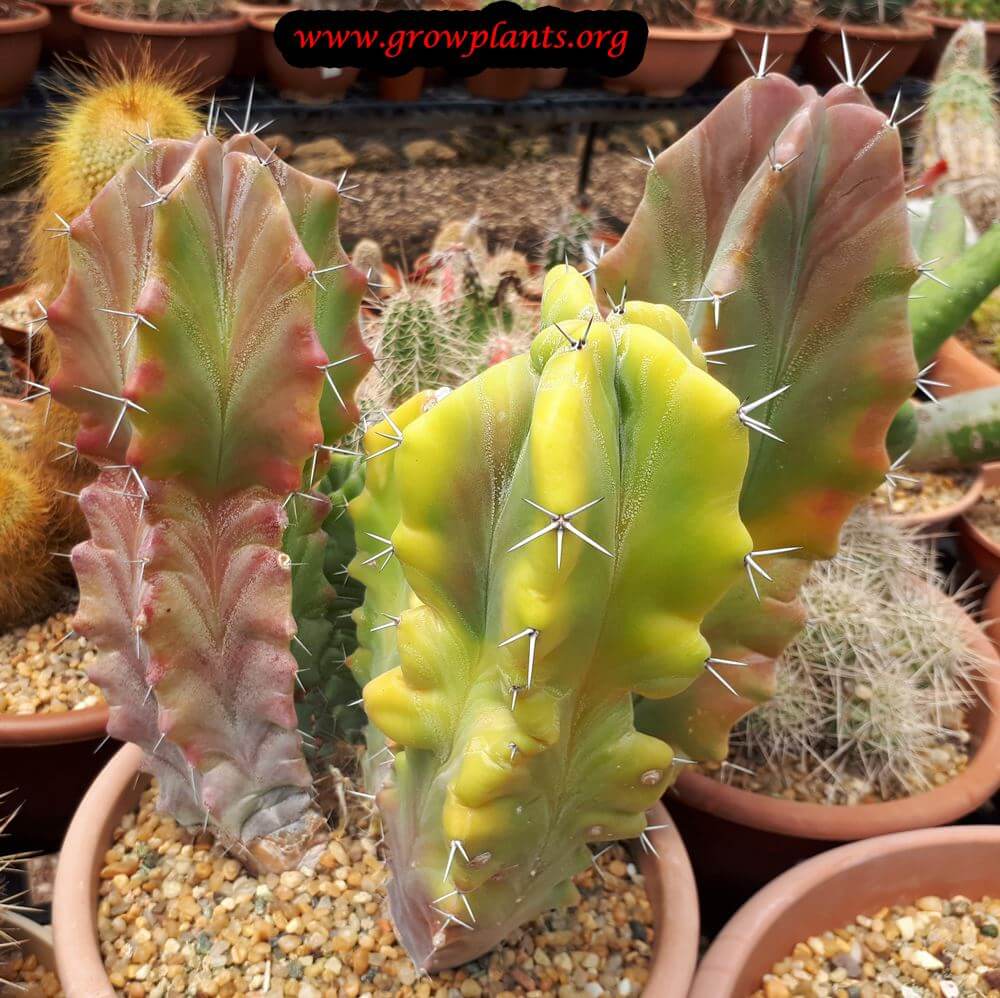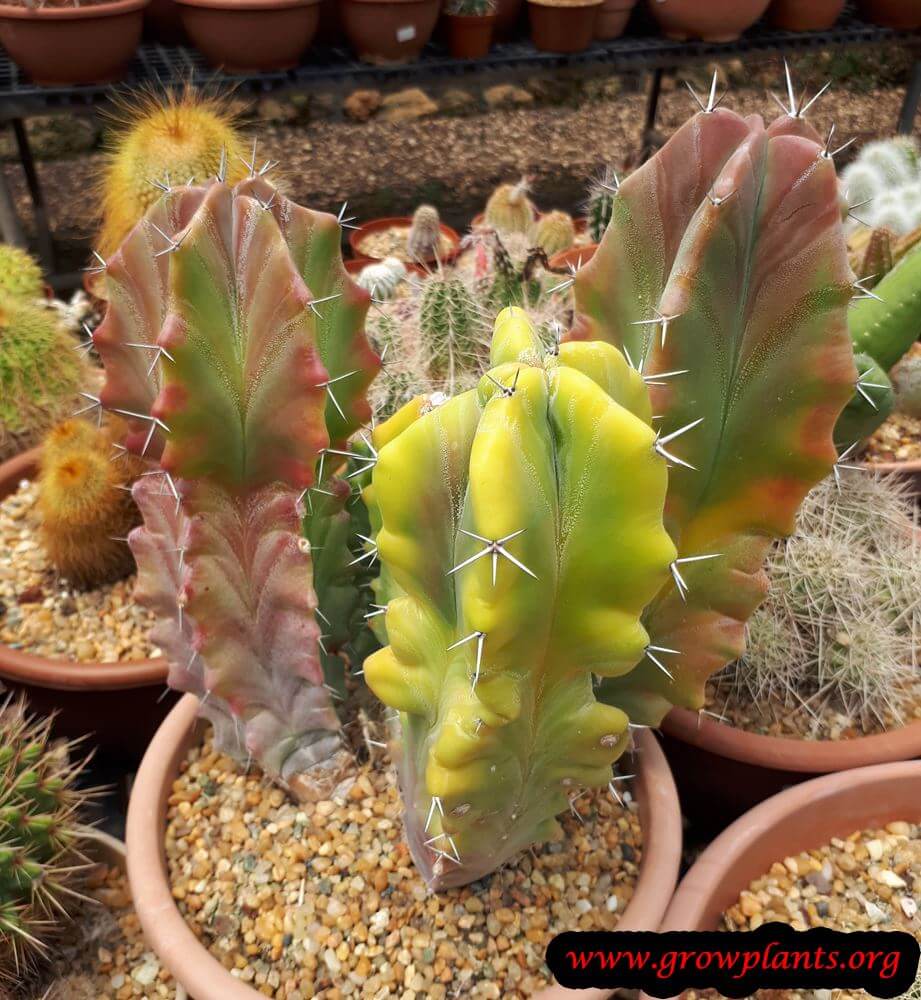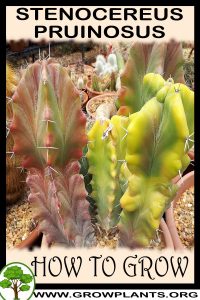
Stenocereus pruinosus grow and care – cactus of the genus Cereus also known as Lemaireocereus pruinosus or Pitaya, Stenocereus pruinosus perennial plant also used as ornamental plant, grow in desert, mediterranean or subtropical climate and growing in hardiness zone 9b-12.
Stem color mostly green some cultivars are can be variegate: orange, yellow, pink, purple or more than one color and colors can be neon colors, shape of the stems erect and can grow as spiral shape.
Flower color white with some pink in the edges, the size of the flower 10+ cm
Stenocereus pruinosus fruits
Fruit peal color can be: red, pink, purple or orange, the fruit color can be white, yellow, orange or purple the seeds also edible
Stenocereus pruinosus for sale – Seeds or Plants to Buy
No products found.
How to grow Stenocereus pruinosus cactus growing and care:
Dry soil (not too much moist), better to have different cultivars for cross pollinators
What is the best way to start growing?
Plant / Seed / Vegetative Reproduction – propagating cutting or daughter plant
How to propagate:
Daughter plants mostly need to take care when pull it from the ground you take all the roots, take a plastic spatula or something harder depend the soil and uncover the roots, dig around the plant and better to use air blower machine or wash it with stream (but let it dry after).
Cutting – better to take all the cactus and cut it for pieces or else it’s just looks cut in the middle, cut with sterile knife after this let the cut part to stay on the shade to heal it’s might take few weeks and even months, put it on the soil with support (stick or something that won’t fall) cover lightly and lightly from the side and water it small amount of water.
Is it necessary to graft or use vegetative reproduction?
Yes, yield faster
Difficulties or problems when growing:
Spines
Planting season:
Spring to autumn, hardiness zone 9b-10a better in spring to summer, hardiness zone 10b-11 spring to autumn and all year in hardiness zone 12
How to plant:
Hold the plant in the part without spine it will be easier to handle prevent that the spines get into the skin, it’s prevent to plant it properly and when the plant big and also it might fall, need to locate the cactus possible with papers cover enough that the spines won’t get to your hands, to put the soil need to use spoon or small shovel to push and tighten the soil, when the plant not stable put few sticks from the place that the plant tend to fall in order to support it until the plant establish.
Pests and diseases:
Snails, slugs
Pruning season:
All year
How to prune:
When the plant stop to grow new branches, when the branches grow into each other and it’s hard to pick up the fruits, rotten parts to cut few cm before the infected part
Size of the plant:
3-10 m, 10-30 feet, but in pot can be smaller as designed
Growth speed in optimal condition:
Slow growing
Water requirement:
Small amount of water and it’s drought tolerant
Light conditions in optimal condition for growing:
Full Sun
Is it possible to grow indoor as houseplant?
No
Growing is also possible in a planter /flowerpot / containers:
Yes, container or clay pot that will be 20-50% bigger (not need deep because the root shallow) for good drainage that important use in the bottom of the container with little rocks like: gravel, lava rocks or pebbles, soil should be cactus potting mix, make holes in the container for good drainage,
Switch the soil after few years:
Removing the cacti from their pots, take paper and put slowly the plant on the paper, possible to “help” the cactus with the hands better to cover with papers or plastic wrap, after that prepare again the “little rocks” in the bottom, put part of the cactus potting mix, take the plant with and locate it in the new place, if it’s small take the soil mix with spoon and organize it (not to get the spines in hands) if it’s bigger use small garden shovel and squeeze the soil that the cactus will be stable and won’t fall, sometimes when it’s not stable better to add some stick that will hold the cactus.
Blooming information
Bloom season?
Spring / Summer
General information about the flower:
White with some pink in the edges flower, the size of the flower 10+ cm
Pollination is done by:
Bees when before the sunset, in the night moth
Edible fruits
Fruit harvest season:
Summer / Autumn
Fruits pests or diseases:
Snails, slugs, fruits
What can be done with big quantities of Stenocereus pruinosus fruit?
Eat raw, juice, jams
Work requirements on the fruit:
Nothing special
How long does it take to bear fruit?
5-10 years
How to grow from seeds
Sow in in full sun, better sandy soil or well ventilated soil like cactus potting mix and good drainage is important
Saving seeds and care until sowing:
Dry and dark place in room temperature
Sowing season:
spring but possible in autumn and winter in hot climate, in summer put it in full shade, in hardiness zone 10a spring to summer, hardiness zone 10b spring to autumn, hardiness zone 11 all year
Planting spacing:
20-30cm, (8-12 inches)
Depth of Sowing:
0.5cm, (0.25inches)
Conditions for seeds germinate:
Moist soil but do not over water and don’t let it dry
Watering requires for Seeds:
Small amount of water, lightly moist soil and don’t let it dry
Germination time:
2-6 weeks
Condition of seedling:
Full sun and don’t overwater
Scientific name:
Stenocereus pruinosus
Alternative names: Echinocactus pruinosus, Cactus pruinosus, Cereus pruinosus, Lemaireocereus pruinosus, Ritterocereus pruinosus, Rathbunia pruinosa, Pitaya fruits, Cereus repandus
Categories
| Blooming Seasons |
|
|---|---|
| Edible Parts |
|
| Culinary uses |
|
| Flower colors |
|
| Climate |
|
| Harvest Season |
|
| Ornamental parts |
|
| Plant growing speed |
|
| Plant life-form |
|
| Plant Uses |
|
| Planting Season |
|
| Plants sun exposure |
|
| Watering plants |
|
| Hardiness zone |
|

